

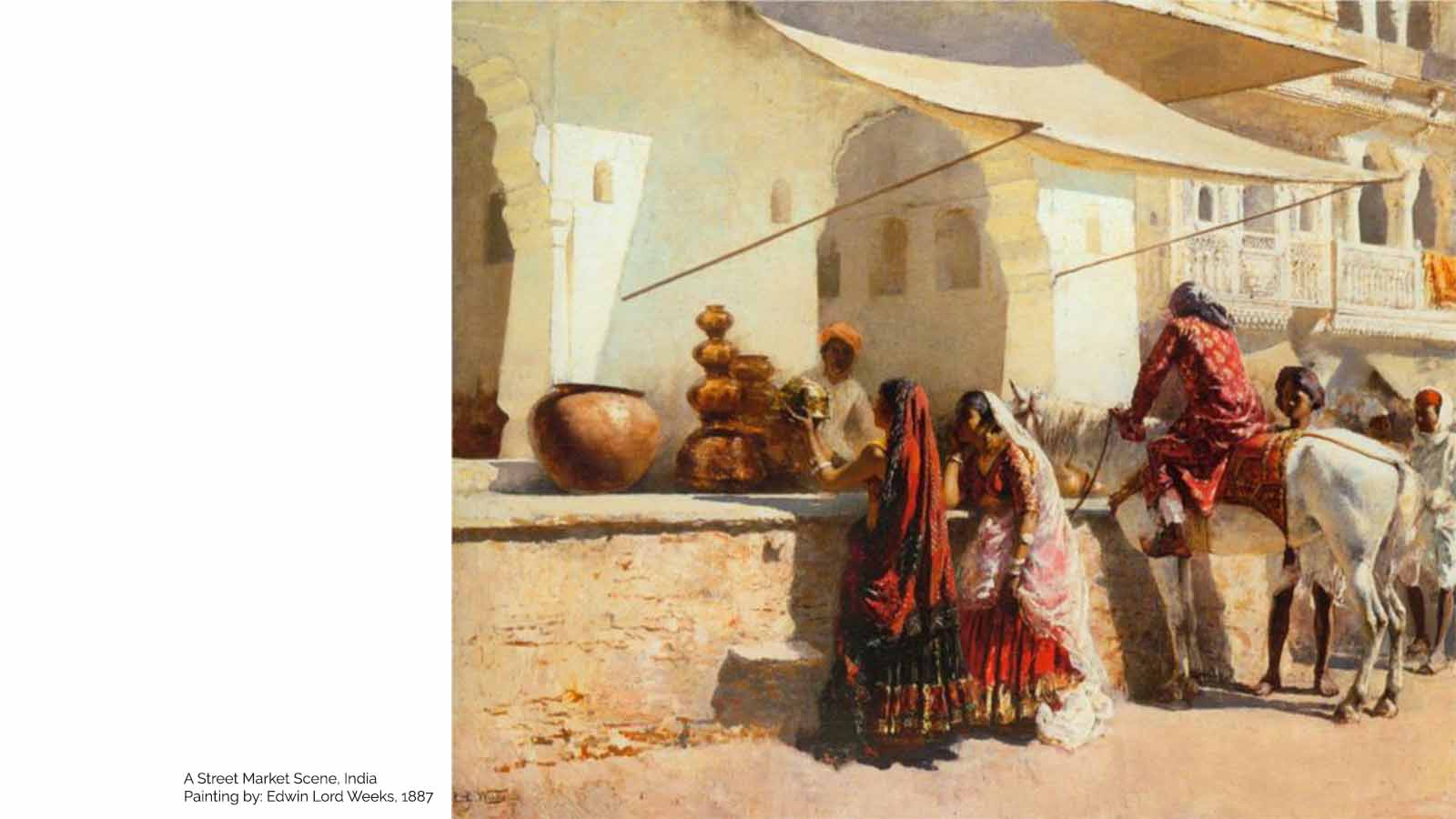
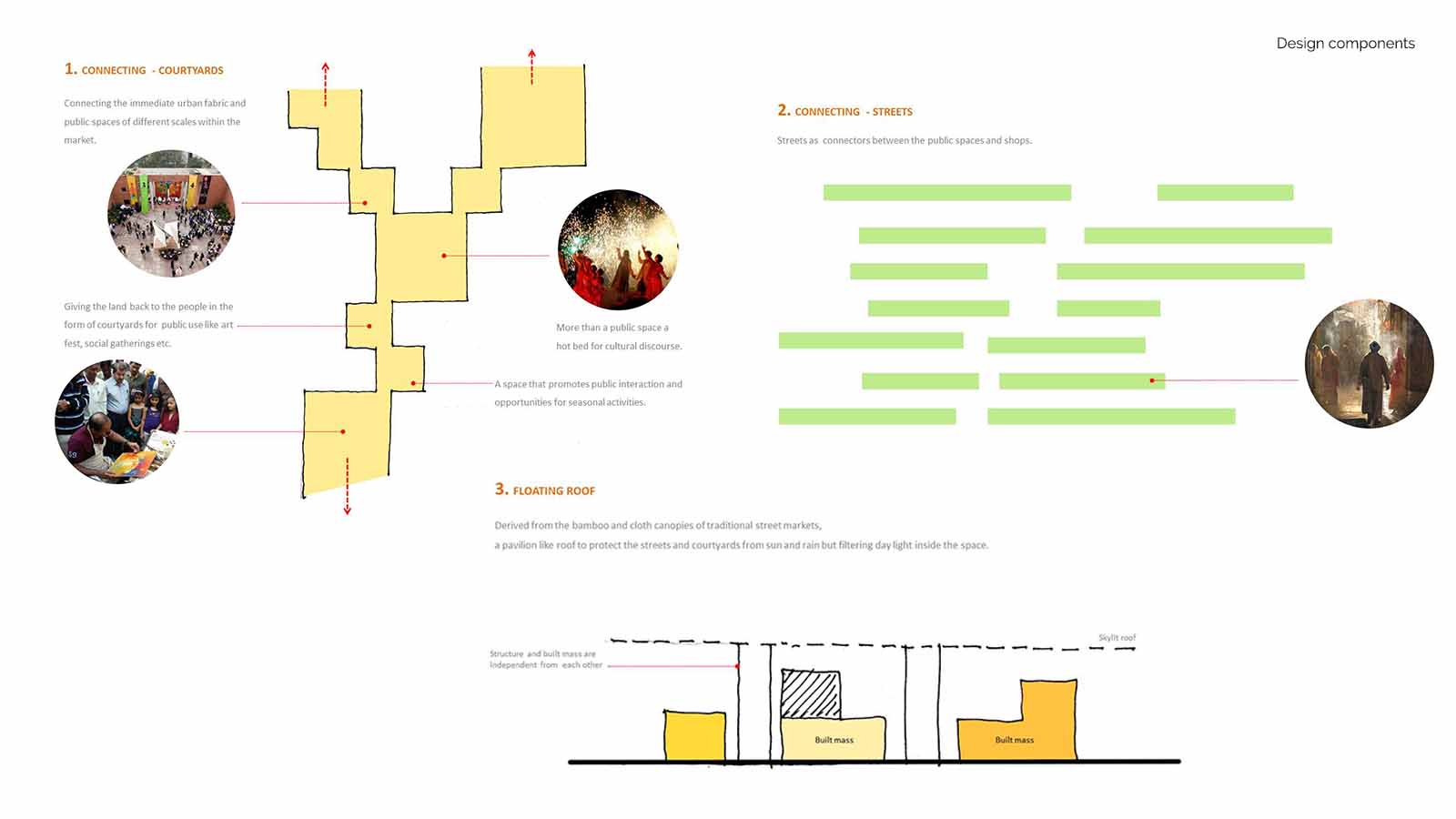

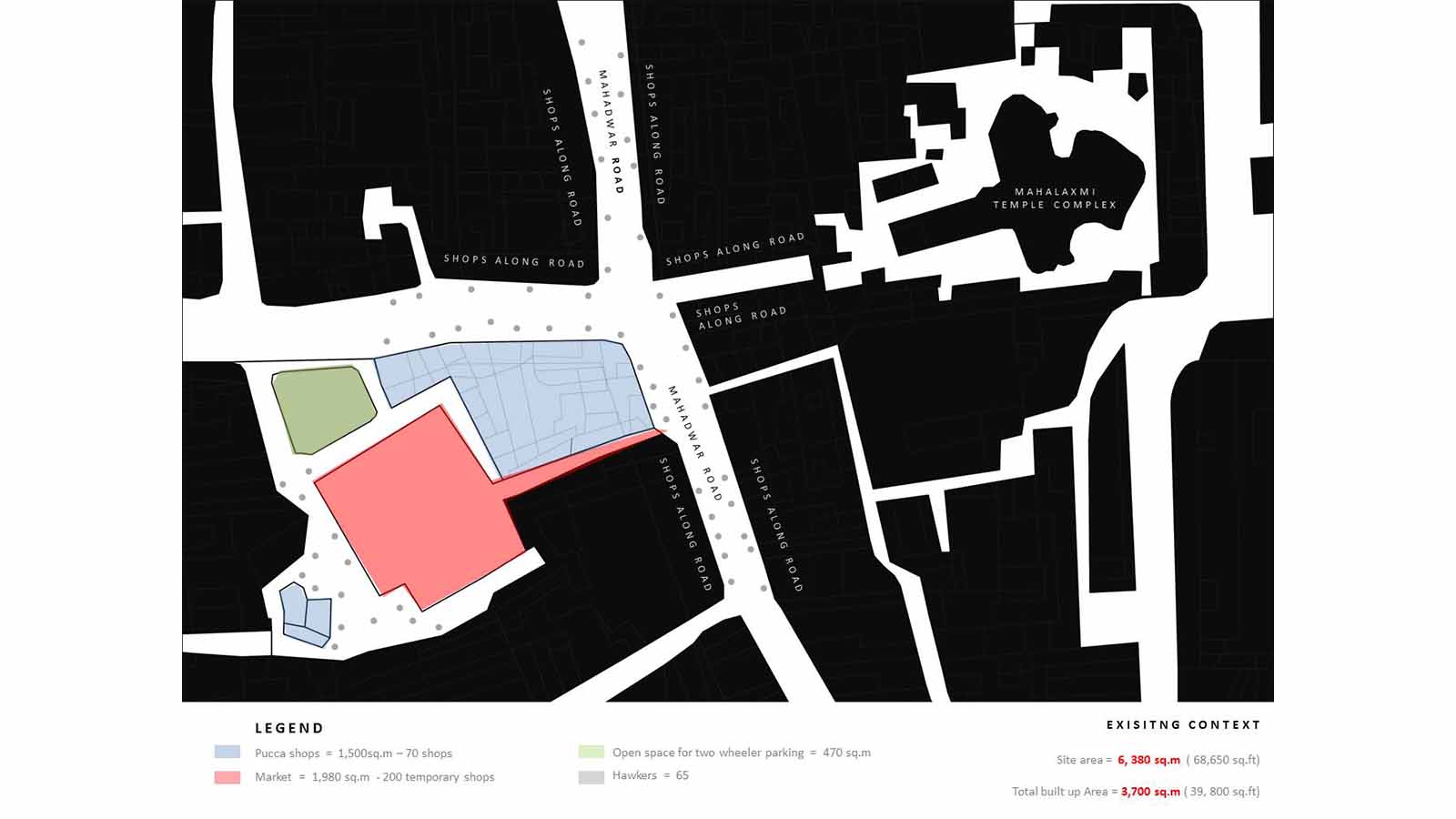

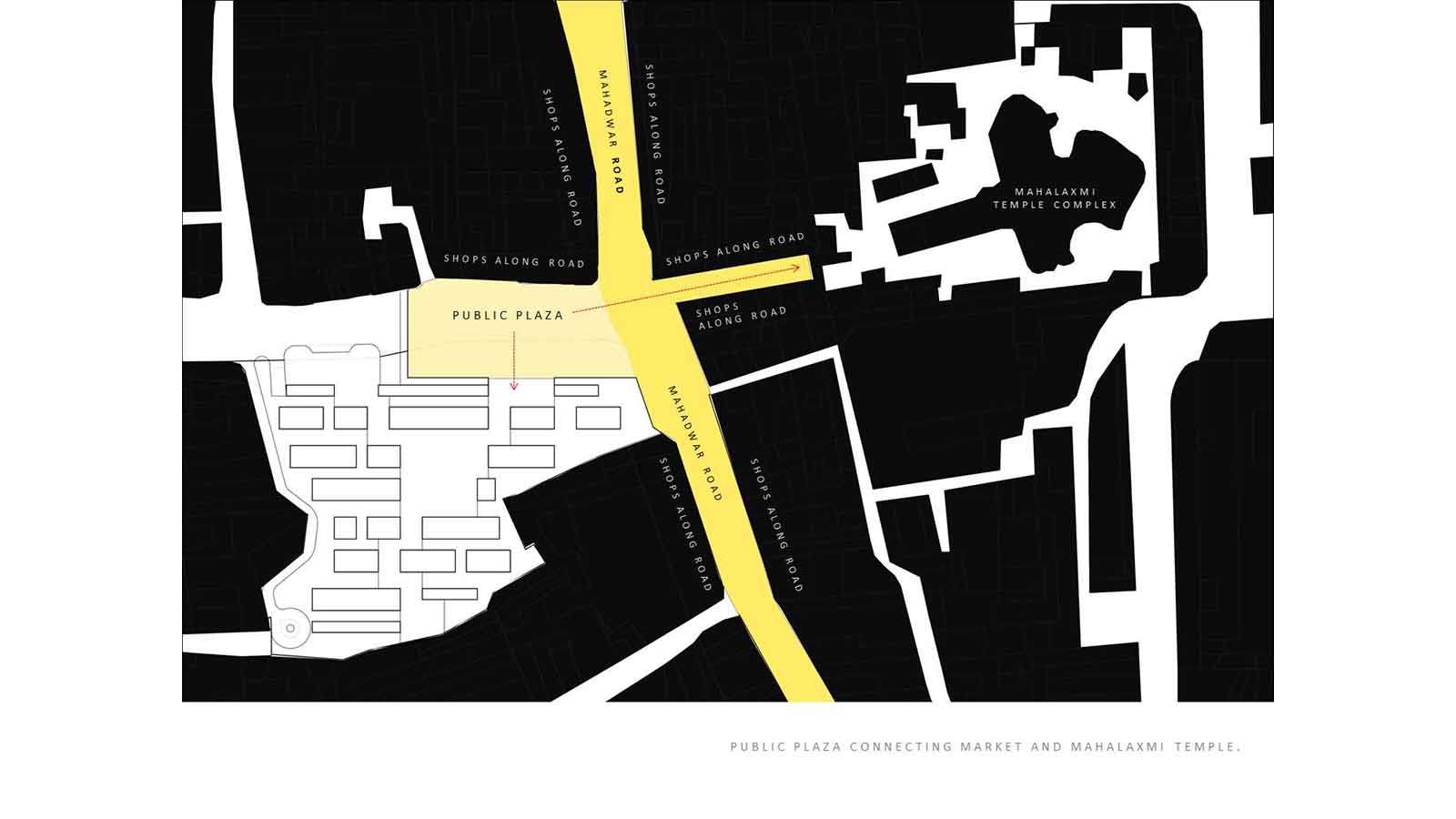
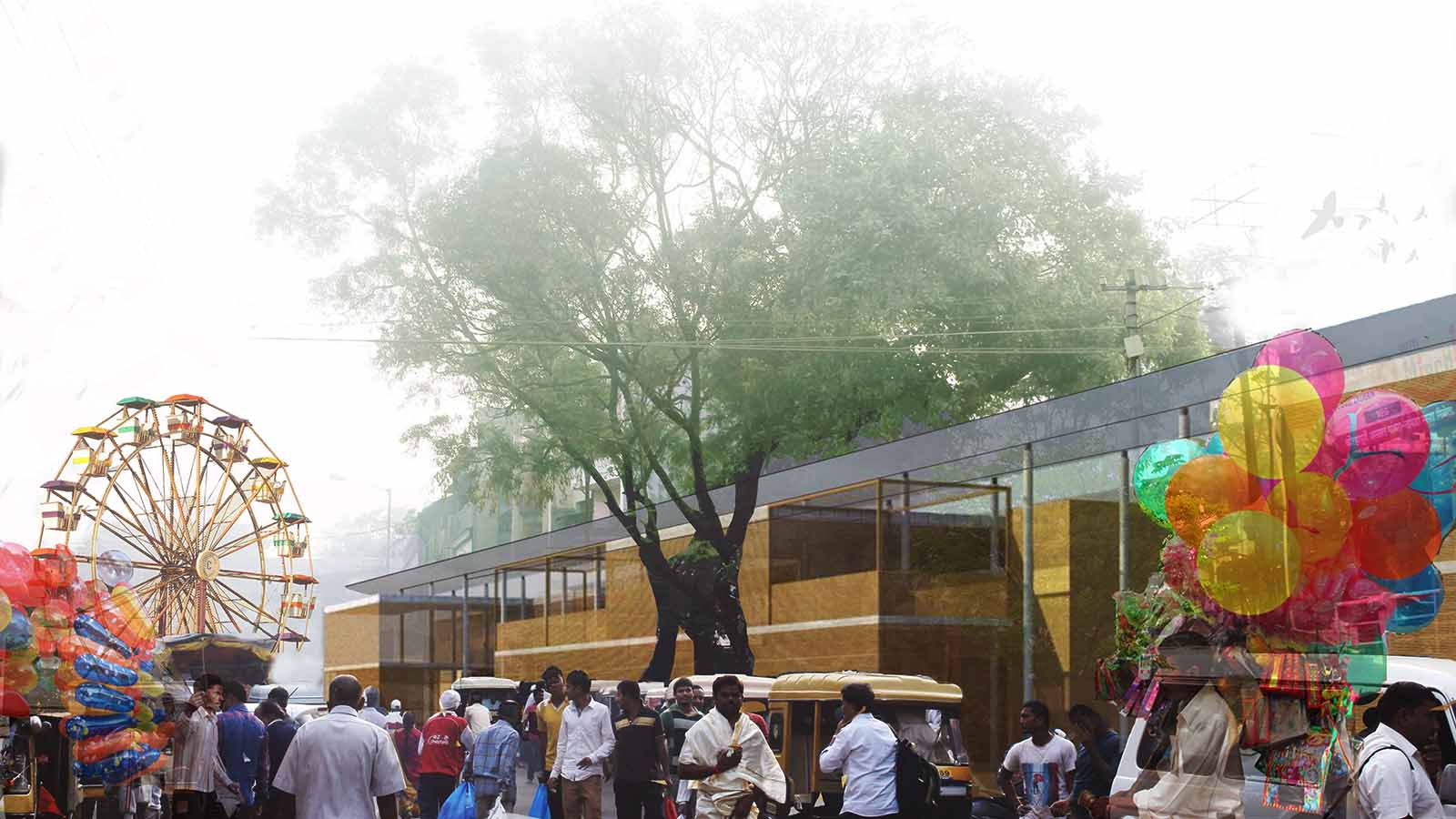








Farmers from nearby villages traditionally set up vegetable markets in cities and towns on specific weekdays and were known as haats. A street was allocated to the farmers where they set up their shops with four bamboo posts and a semi-transparent cloth stretched between the posts (like a handmade pavilion) to protect the vegetables and vendors from the sun, while at the same time allowing shade and light inside the covered space. A Number of such shops along the street formed a traditional market. These streets could then culminate into the city chowks, or open spaces, or into a street of larger scale. In this way traditional Indian markets blend into the city’s urban fabric and vice versa. In cities like Pune the different neighborhoods became known by the day of the week that farmers were allowed to market their goods.
The traditional notions of an Indian market revolve around three components.
- Public space – A space that can connect the market and immediate urban fabric, and most importantly giving the land back to the city for public use.
- Streets – As connectors between the city and market.
- Roof canopies to cover the streets and public spaces.
The overlap of these components evolved an indigenous pattern of structured streets and courtyards. The streets allow the people to shop and connect back with the city. The courtyards add an extra dimension to the market, promoting it as a public place to interact. There are parallels between the way Indian markets have evolved and the older ones in medieval cities, like the Grand Bazaar in Istanbul, and the more modern Galleria in Milan. All follow the same principle.
During the day the market mainly works like a module of a multifunctional public space that caters to the city for seasonal activities, like performing arts, festival celebrations, art festivals, etc. At night the market turns into a big living room for surrounding communities to come together and interact informally. If such markets are planned in cities on a zone-wise basis, within a radius of one kilometer from one another, so that people can reach them by walking easily in fifteen minutes, this will help in cutting down on the space allocated for parking and on the congestion within the city. This will open up more public space for pedestrians for different amenities. The advantages of having such markets zone-wise are:
- Meaningful public spaces for neighborhood interaction;
- Access to fresh foods for nearby communities;
- The street-side hawkers get organized within the public spaces of markets, which allows for cleaner and wider roads for people to walk;
- More markets could generate more jobs for farmers from nearby villages, and provide more choices for the shoppers;
- More efficient use of land by giving it back to city for public use; and,
- Neighborhood identity is created, as different zone in the city may be called by the names of their main market.
